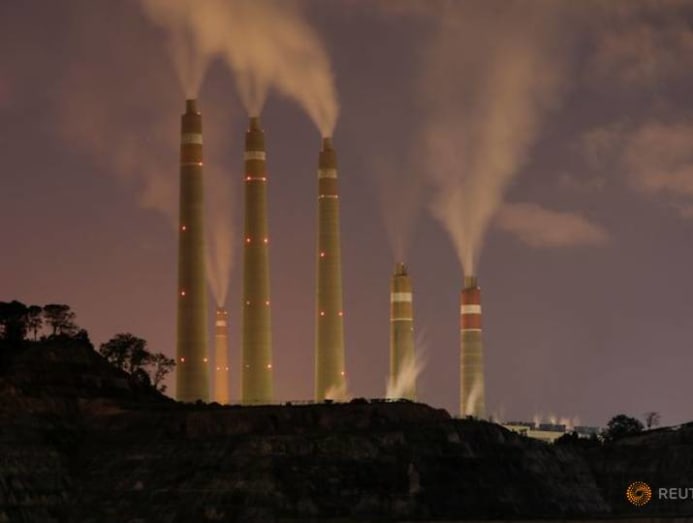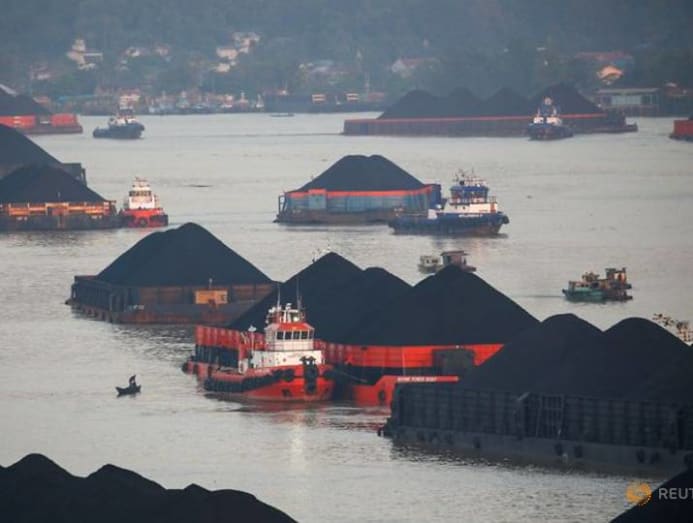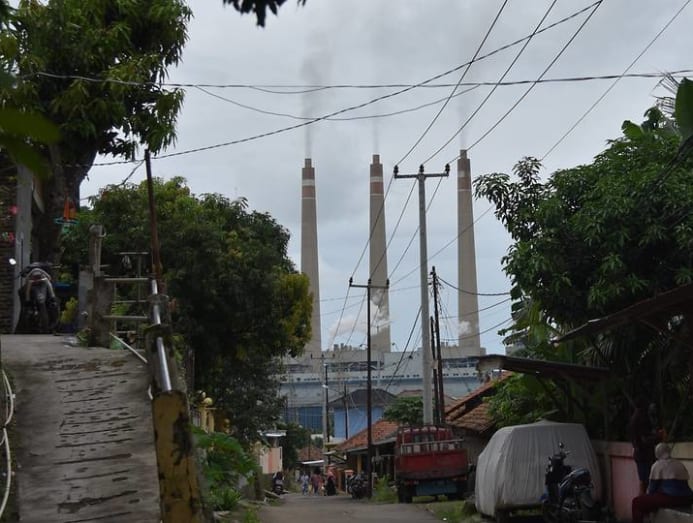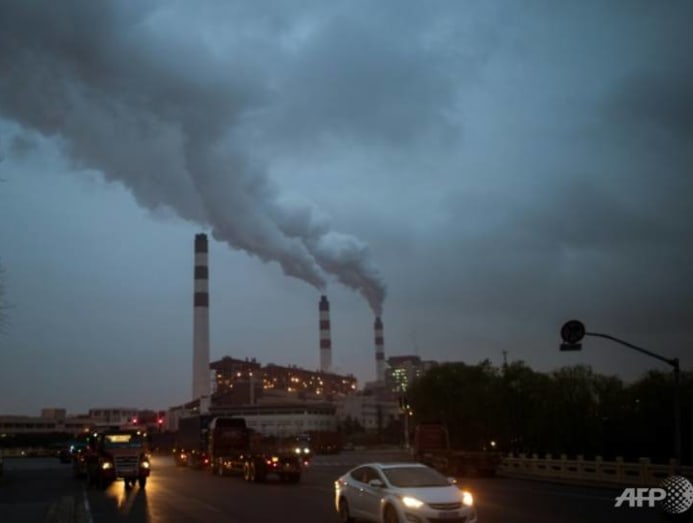Funding for new coal projects drying up fast in Southeast Asia as climate pressures mount
BANGKOK: An exodus of financing for new coal projects in Southeast Asia is heaping pressure on new regional coal power projects and the companies and governments hoping to persist with burning fossil fuels for energy.
The Asian Development Depository financial institution (ADB) delivered withal some other accident to regional coal financing when it appear final Friday (May 7) that information technology would conditionally cease funding new coal-fired power stations as well as coal mining and oil and natural gas production and exploration.
It follows a raft of Southeast Asian banks and development banks and export credit agencies (ECAs) from China, Nippon and Republic of korea pulling their support for dirty energy generation, as ambitious climatic change targets filter through the sector.
"The money is drying up. Coal financing has fled, globally. Insurance, debt, disinterestedness, everywhere. The last human being standing was the ECA's of China, Japan and Korea," said Tim Buckley from the Institute for Energy Economics and Financial Analysis (IEEFA).
"If these banks all cease financing, coal is dead considering coal is non bankable without government subsidised finance," he said.
ADB appear a major - but expected - shift in policy post-obit mounting demands for information technology to cease supporting projects non aligned with tackling climatic change.
"Coal and other fossil fuels have played a large office in ensuring access to energy for the region'southward economic evolution, but they accept not solved the free energy access challenge, and their use harms the surroundings and accelerates climate change," the bank said in its new draft free energy policy, while non ruling out supporting natural gas projects in the futurity, under certain conditions.
READ: Locals fear water conflict as new industrial boom arrives forth Thailand'due south eastern seaboard
The development bank said that it has invested Usa$42.5 billion in the energy sector across the region between 2009 and 2019, simply terminal invested in a new coal establish viii years agone in Pakistan. Last calendar month, it pledged to target US$80 billion in climate financing past 2030.
Information technology follows pledges from the Japanese and South Korean governments to terminate or tighten the financing of overseas fossil fuel plants, which includes projects in the ASEAN region, as both countries upped their climate change target commitments last calendar month.

Globally, coal funding is on life support - funding for new projects dropped in 2022 to the everyman levels seen in a decade. Yet Southeast Asia remains a holdout on the trend, contributing to the growth of a commodity fast reaching its expiry date.
It means that some countries will continue to persist with coal as long as they can. And despite all the financial headwinds, Fitch Solutions analysis does not predict coal demand to tiptop until 2028, and new coal projects even so account for more an estimated 40 per cent of total ability capacity in Asia's power projection pipeline.
"Coal will remain the ascendant generation source in the regional ability mix, despite its share falling slightly over the coming decade," said Sabrin Chowdhury, a senior commodities analyst at Fitch Solutions.
"This is largely due to several governments beyond the region retaining an ongoing delivery to coal, as it remains the virtually practical means to stimulate affordable electricity generation growth at the pace and scale needed by many emerging markets in the region at present," she said.
SHIFTS IN ASEAN
With construction pending on large planned plants in Vietnam, Republic of indonesia and the Philippines, the region risks remaining one of the final frontiers for new coal, while at the same time, many countries elsewhere are rushing to divest from proposed coal infrastructure and decommissioning existing and increasingly unviable operations.
Co-ordinate to Fitch Solutions, Republic of indonesia ranks tenth and Vietnam 16th globally in terms of percentage of electricity generation from coal in 2020.
"Going forward to 2030, we wait Republic of indonesia to accept 6th and Vietnam 10th position respectively. While this definitely means these two countries are among the global laggards in shedding fossil fuel dependence, they are certainly not extreme outliers," Chowdhury said.

Indeed, IEEFA'due south Tim Buckley is encouraged about the fast changes he is seeing in Vietnam, and the impressive amount of renewable energy being installed.
"Over the final 6 years, ASEAN has been a world laggard in renewables, totally. I retrieve everything inverse last twelvemonth with Vietnam," he said.
"Vietnam is a brilliant example, the lead instance of how fast Asean countries can build free energy security. They tin can utilize global capital to practise information technology, they can do it on a calibration that no ane thought was possible and they can help solve global climate alter."
Vietnam has the fastest growing free energy demand in the world, and while its raw coal capacity is forecast to increment in the coming years, as a percentage it is being far outweighed by new solar and wind installations.
"For big fast growing economies, all types of fuel including coal will need to grow in absolute terms. Especially for those that are running high risk of power supply shortages, and those that come with abundant, affordable, reliable, domestic resources," said Shirley Zhang, a master analyst at APAC Coal Markets.
READ: Indonesia is poised for EV riches as Tesla circles, but a nickel rush could injure the environment
But like everywhere, financial and environmental considerations are starting to make an impact in Vietnam. Mitsubishi recently pulled out from the Vinh Tan 3 coal-fired ability plant project over climate concerns, and Greta Thunberg is among the critics campaigning for the state-backed Vung Ang two project to also be mothballed.
While regime support remains strong for coal - likewise as LNG equally a transition fuel - still it is mooting dropping 15 GW of coal chapters from its future pipeline. Balancing the surroundings with pressing needs to avoid power shortages and securing domestic free energy security will be cardinal challenges for Vietnam in the next decade.
Walking abroad from coal plants - which accept a long tail before they get operational - is also problematic, for investors and hosts alike.
"There is a substantial amount of chapters under structure now, and information technology is unclear how the regime volition halt the evolution of these projects without incurring pregnant compensation costs," Chowdhury said.
Regardless, shuttering new projects is a regional motion. According to Global Free energy Monitor (GEM), there has been an eighty per cent decrease in planned new coal construction from five years agone in four countries - Vietnam, too as Indonesia, the Philippines and Bangladesh. It estimates but 25.2 GW remaining to be installed in future years with 62 GW to be cancelled.
"In Southeast Asia the prospects for coal power are bleak and are largely full-bodied in a handful of countries. New coal projects are doomed to be hopelessly uneconomic in the well-nigh futurity if they aren't already," said Bob Burton, the editor of CoalWire at Jewel.
"Until recently, utilities and governments had a range of international banks and export credit agencies vying to provide support for new coal projects. That era is rapidly coming to an end," he said.

While Vietnam is seen as making potent steps towards renewables, the progress is less pronounced in coal-export dependent Indonesia.
The government is aiming to further boost domestic coal demand every bit it looks ahead to a almost time to come where its exports are in jeopardy due to the make clean free energy wave. Every bit a upshot, coal volition become an even more prominent part of Republic of indonesia'due south power mix past the finish of the decade.
Fitch Solutions forecasts thermal coal consumption to increment past 88 per cent in the land, or around 53 million tonnes, between 2022 and 2030.
"I'g not suggesting that Republic of indonesia is going to run across the calorie-free and salve the world on climate. They're a coal baron ... it's non going to get away from coal any fourth dimension soon," Buckley said.
The state'south performance on renewables remains jittery, and ecology considerations "shouldn't exist whatever hindrance" in the years ahead due to the ongoing importance of promoting coal, Chowdhury says.
Despite strong state backing, international investors - namely from the increasingly climate-sensitive north Asia - are looking to wind up their commitments in Indonesia besides.
Prc "WILL Alter EVERYTHING"
China is seen as prolonging the lifespan of coal at the same time as it takes a leadership function in developing the technologies and infrastructure to supervene upon information technology. The policies it forms and investment directions it takes have a great influence over what happens elsewhere, including Southeast Asia.
It is largely responsible for global emissions rocketing back up in 2021, with international coal and gas use this twelvemonth set to exceed 2019, pre-COVID-nineteen levels, according to the International Energy Agency (IEA).
Mainland china ramped up its ain coal outputs in the immediate aftermath of the pandemic, every bit it looked to stimulate its economic system to power domestic growth. Information technology deputed 38.four GW of new coal plants last year - 76 per cent of the global full number of new plants for 2022 - eclipsing the 37.viii GW chapters of plants decommissioned globally, by and large in the U.s. and Europe.
More than than lxxx per cent of the projected growth in coal use is set to come up from Asia, the IEA reported, and that growth is beingness led past People's republic of china. Only these increases are only in the brusk term.
Cathay's mid-term plans look to eviscerate the dirty technologies it has relied on in the past. It is the commuter of the global renewable manufacture growth, which is forecast to be 40 per cent higher in 2022 than predicted a year ago.

Its biggest polluters - massive state power enterprises - are stepping into line to deliver a greener vision espoused by President Xi Jinping and setting their own targets for peak emissions past 2025, ahead of China'south overall ambition to reach net aught by 2060.
"That is a profound pledge and it will change everything. In Red china, like any state, the left manus doesn't always concur with the correct hand and there are inconsistencies and at that place'due south a lack of transparency. But I'm really really bullish about what China is doing," Buckley said.
"I've been very skeptical of the western alarmism that China is going to continue on polluting, go on on destroying the planet and destroying their own nation at the same time as pretending to exist a greenish histrion.
"They're the world leaders in current of air, in solar, in grids, in nuclear, in hydro, in electric vehicles, in batteries, in rare earths, in lithium ion; in other words in every industry of the future that is critical for the globe to decarbonise," he said.
READ: Commentary - Indonesia's coal industry is on its terminal legs
Over recent years, China has projected its ability policies onto Southeast Asia via its ambitious Belt and Road Initiative. In terms of finance, globally the project has injected US$245.8 billion into free energy finance, based on data from the Global Development Policy Eye at Boston University.
Of that, the bulk was put into fossil fuels, and less than 1 per cent into solar infrastructure. Investments into air current and biomass were even lower.
With this energy policy ostensibly on agree for the past two years, Buckley believes a resurrection of the programme could soon be a catalyst for massive renewables spending in countries open up to diversifying and modernising their energy mix with Red china's help.
"At the stop of the mean solar day, finance is incredibly powerful and I've been waiting for this tipping point to be reached," he said. "We reached it faster than I thought nosotros would."
Source: https://cnalifestyle.channelnewsasia.com/sustainability/funding-new-coal-projects-drying-fast-southeast-asia-climate-pressures-mount-294656
0 Response to "Funding for new coal projects drying up fast in Southeast Asia as climate pressures mount"
Postar um comentário